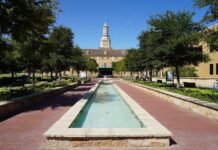Former South African Leora Raikin has taken on the daunting task of cataloguing, preserving and exhibiting the art of her great-uncle, David Labkovski. Most compelling, though, is that she is using the works to teach students to document history.
Born in Lithuania in 1906 and schooled in fine art, Labkovski produced hundreds of works in oils, pen and ink, pencil and acrylic, on canvas, cardboard and paper.
All documented his life – a Jewish life in Eastern Europe before, during and after World War2. His was a story, says Raikin, of an artist, of human dignity and of betrayal.
Labkovski refused to sell his work and when he died in 1991 he left his work to Safad, a town in Israel with a strong art community and where he and his wife had lived since leaving Lithuania in 1958.


























